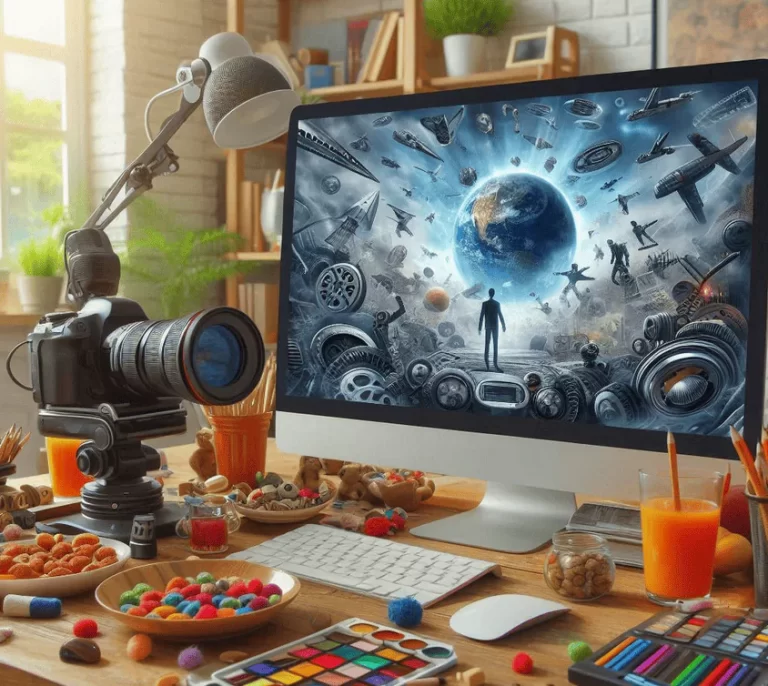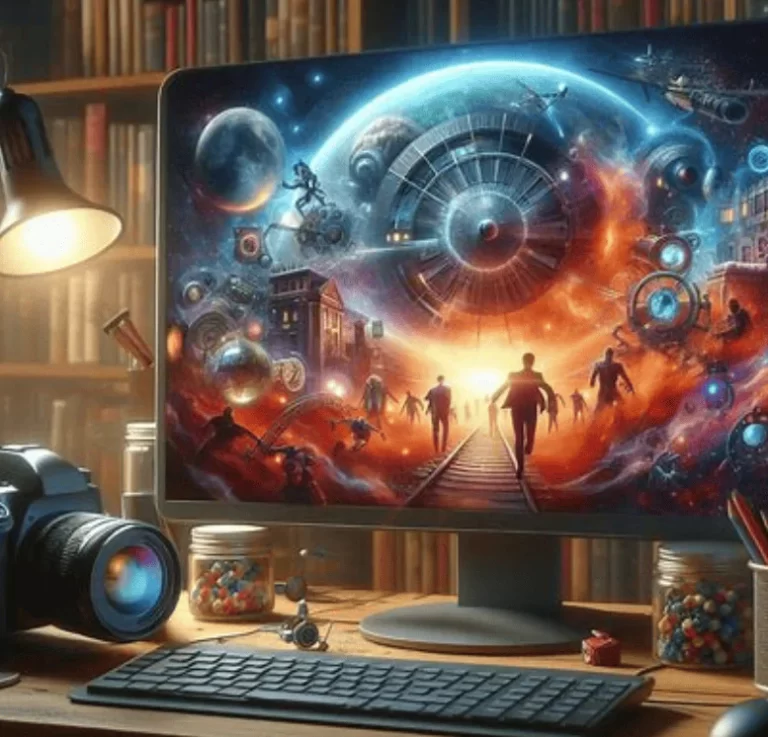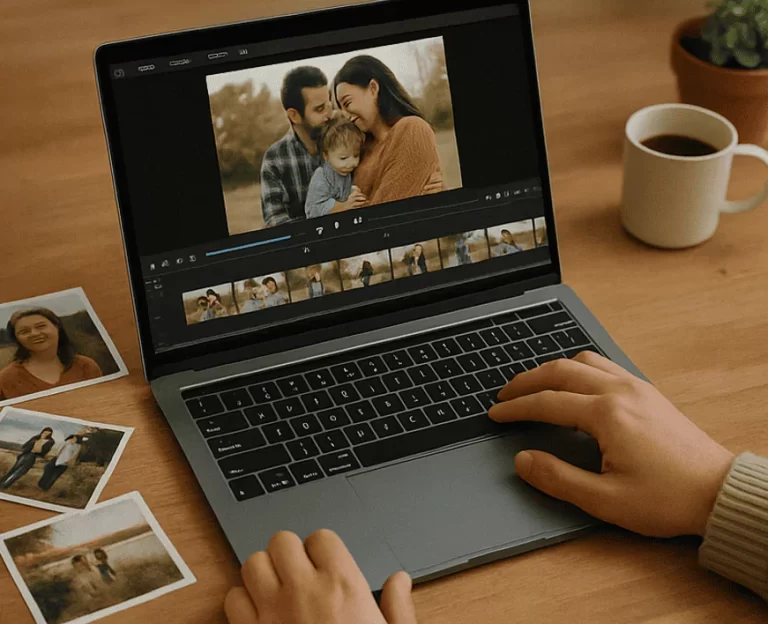
Photo Editing In the realm of visual storytelling, photo editing has always been at the forefront of innovation. What began as a meticulous process in darkrooms has now evolved into a sophisticated digital art form. Today, the emergence of artificial intelligence (AI) is revolutionizing the industry, promising unprecedented levels of precision, creativity, and efficiency. This fusion of technology and creativity is redefining the boundaries of what’s possible in photo editing, paving the way for an exciting future.
This article explores the transformative role of AI in photo editing, the ethical implications of its adoption, and what lies beyond as this field continues to evolve.
The Evolution of Photo Editing
To understand the future of photo editing, we must first reflect on its origins and trajectory. The art of editing photos has always been about enhancing and interpreting reality. In its early days, photographers relied on physical techniques like dodging and burning during film development. These methods, while effective, demanded extraordinary skill and patience.
The digital revolution in the late 20th century introduced software like Adobe Photoshop, democratizing access to powerful editing tools. Suddenly, anyone with a computer could manipulate images with astonishing precision. Over time, advancements in software led to non-destructive editing, 3D compositing, and an array of features that blurred the lines between reality and artistic interpretation.
Enter artificial intelligence—a paradigm shift poised to redefine the very nature of photo editing.
How AI is Transforming Photo Editing
AI-powered tools are no longer confined to basic enhancements; they’re reshaping how images are created, edited, and even perceived. By leveraging machine learning algorithms and neural networks, these tools bring automation and sophistication to complex editing tasks.
1. Smart Object Recognition and Selection
AI excels at identifying objects within an image, making it easier to isolate subjects, backgrounds, or individual elements. Tools like Photoshop’s Select Subject or Luminar Neo’s AI masking save hours of meticulous manual labor.
- Use Case: In portrait photography, AI can automatically select and refine hair, a task traditionally considered labor-intensive.
2. Automated Adjustments
Modern software can analyze a photo’s composition, lighting, and color palette to suggest optimal adjustments. Features like Lightroom’s Auto Tone and AI-driven exposure corrections are invaluable for beginners and professionals alike.
- Impact: These tools reduce the learning curve, enabling users to focus on creative decisions rather than technical minutiae.
3. Neural Filters for Retouching
AI-powered neural filters can perform advanced tasks such as skin smoothing, age modification, or even altering expressions with stunning realism. These filters learn from vast datasets, ensuring natural and convincing results.
- Controversy: While impressive, such tools raise ethical concerns regarding authenticity and consent in photo editing.
4. Content-Aware Fill and Object Removal
AI-driven algorithms like Photoshop’s Content-Aware Fill seamlessly replace unwanted elements in a photo by intelligently sampling surrounding areas. This technology empowers photographers to clean up images without leaving traces of manipulation.
5. Style Transfer and Artistic Effects
Style transfer technology enables users to apply the aesthetics of one image to another, mimicking specific artistic styles or historical techniques. AI can now replicate the brushstrokes of Van Gogh or the color palettes of cinematic blockbusters.
The Benefits of AI in Photo Editing
AI brings unparalleled advantages to the editing process, enhancing both efficiency and creative freedom.
1. Speed and Automation
Tasks that once took hours can now be accomplished in seconds. From batch processing to instant masking, AI reduces turnaround time without compromising quality.
2. Accessibility
By simplifying complex editing techniques, AI makes professional-grade tools accessible to hobbyists and aspiring photographers. This democratization fosters greater creativity across all skill levels.
3. Enhanced Precision
AI’s ability to analyze minute details ensures flawless edits, whether it’s refining a selection, balancing tones, or retouching portraits. This level of precision surpasses what many human editors can achieve manually.
4. Augmented Creativity
AI-powered features inspire new creative directions. By offering suggestions or enabling stylistic experimentation, these tools encourage users to push boundaries and explore uncharted territory.
Ethical Implications of AI in Photo Editing
While the benefits of AI are undeniable, its adoption raises important ethical questions about authenticity, originality, and misuse.
1. Authenticity and Misrepresentation
AI-powered photo editing can blur the line between truth and fiction. Tools that alter facial features or replace backgrounds raise concerns about the integrity of visual storytelling. In photojournalism, where authenticity is paramount, such edits can erode trust.
2. Plagiarism and Originality
Style transfer tools, while innovative, prompt debates about originality. When AI mimics the aesthetic of a famous artist, where does creative authorship lie? As these tools proliferate, questions of intellectual property become increasingly relevant.
3. Deepfakes and Misinformation
The same technologies that enable creative enhancements can also be weaponized to produce deepfakes or manipulate images for malicious purposes. This poses challenges for media, politics, and personal privacy.
4. Job Displacement
As AI automates repetitive tasks, some fear it could render certain roles in photo editing obsolete. However, others argue that AI will augment human creativity rather than replace it entirely.
Beyond AI: The Next Frontier in Photo Editing
While AI is at the forefront of technological innovation, the future of photo editing extends beyond its current capabilities. Emerging trends and advancements hint at exciting possibilities for creatives.
1. Augmented Reality (AR) and Virtual Reality (VR) Integration
AR and VR are transforming how we interact with images. Future editing tools may allow creators to manipulate photos in immersive 3D environments, redefining perspectives and workflows.
- Example: Editing landscapes in VR could involve virtually stepping into the scene, adjusting lighting or perspective from within.
2. Real-Time Editing
As computing power increases, real-time photo editing becomes a reality. Imagine applying complex effects or retouching high-resolution images instantly, without waiting for rendering.
3. Quantum Computing and Its Impact
Quantum computing, though in its infancy, promises to revolutionize processing speeds. For photo editing, this means faster algorithms capable of handling even the most complex neural networks.
4. Emotion Recognition in Edits
Future AI could analyze the emotional tone of a photo and suggest edits to amplify its impact. For instance, a serene landscape might receive enhancements to emphasize tranquility, while an energetic cityscape might be edited to heighten vibrancy.
The Role of Human Creativity in the Future
Despite technological advancements, human creativity remains irreplaceable. AI may excel at automation, but it lacks the intuition, context, and emotional depth that define artistry. The most compelling edits will always come from a collaboration between human ingenuity and machine precision.
Preparing for the Future of Photo Editing
To thrive in this evolving landscape, photographers and editors must adapt to emerging technologies while honing their creative instincts.
1. Embrace Lifelong Learning
Staying ahead requires continuous education. Mastering new tools, understanding AI’s potential, and experimenting with cutting-edge techniques will ensure relevance in a competitive field.
2. Develop a Distinctive Style
Amidst an influx of AI-generated edits, originality will be a defining trait. Cultivating a unique style ensures your work stands out, regardless of technological trends.
3. Advocate for Ethical Practices
As the industry evolves, creatives have a responsibility to uphold ethical standards. Transparency, consent, and authenticity should remain guiding principles in photo editing.
Conclusion: A Future Full of Possibilities
The future of photo editing is as exciting as it is transformative. AI’s integration into editing workflows marks a new chapter, offering tools that enhance creativity, precision, and accessibility. Yet, this is just the beginning. As AR, VR, and quantum computing enter the fray, the possibilities for innovation are boundless.
Ultimately, the future belongs to those who balance technological expertise with artistic vision. By embracing change and pushing creative boundaries, we can shape a world where photo editing continues to captivate, inspire, and redefine the way we see reality.



